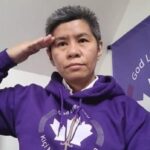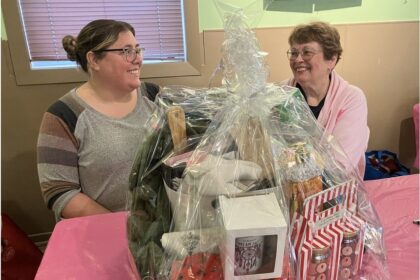Indigenous·NewFirst Nations leaders talked about the need to develop a national repatriation strategy for artifacts, cultural items and ancestral remains at the Assembly of First Nations annual general assembly in Winnipeg on Friday.’One of the biggest gaps we are seeing is funding for communities,’ says Canadian Museums Association CEOCBC News · Posted: Sep 05, 2025 3:19 PM EDT | Last Updated: 10 minutes agoBrandy George, an archaeologist from Kettle and Stony Point First Nation in southern Ontario, speaks at the AFN annual general assembly in Winnipeg on Friday. (Sis’moqon/CBC)First Nations leaders talked about the need to develop a national repatriation strategy for artifacts, cultural items and ancestral remains at the Assembly of First Nations (AFN) annual general assembly in Winnipeg on Friday.”Museums and institutions across Canada still hold many of our ancestors and belongings taken without our consent,” Brandy George, an archaeologist from Kettle and Stony Point First Nation in southern Ontario, told the assembly. “Museums are starting to listen and some have returned sacred items and ancestors to our nations. It’s been a long time coming but as we know, the work isn’t done. It’s not enough.”A resolution before the assembly called on the AFN to create First Nations-led task force to develop a national repatriation strategy. It also called on the federal government to implement the recommendations from the Canadian Museums Association’s 2022 report on the United Nations Declaration on the Rights of Indigenous Peoples, including long-term funding to support First Nations’ repatriation efforts. Janis Kahentóktha Bomberry, executive director and CEO of the Canadian Museums Association, spoke at the annual general assembly in Winnipeg on Friday. (Miki Wolf/CBC)Janis Kahentóktha Bomberry, executive director and CEO of the Canadian Museums Association told the assembly that a lot of the work in repatriation has fallen on communities.”That’s doing the research, locating the belongings, accessing site visits, arranging travel at the community’s expense the majority of the time,” said Bomberry.She said it’s important to develop national repatriation legislation with a well-funded framework. “One of the biggest gaps we are seeing is funding for communities and also funding for the museums to work in repatriation,” said Bomberry.Articles 11 and 12 of UNDRIP state that Indigenous peoples have the right to maintain and protect their archaeological and historical sites and artifacts, that states should enable the access and/or repatriation of ceremonial objects and human remains in their possession through processes developed in conjunction with Indigenous peoples, and provide redress in respect to cultural property taken without consent.In 2021, Canada passed legislation to harmonize its laws with UNDRIP and two years later released its action plan on how to implement it. British Columbia Regional Chief Terry Teegee speaks at the annual general assembly in Winnipeg on Friday. (Sis’moqon/CBC)British Columbia passed an UNDRIP law in 2019 and Regional Chief Terry Teegee highlighted the work that’s been done between First Nations and the B.C. government to change B.C.’s heritage act to help First Nations protect ancestral remains and sacred sites.The legislation changes are expected to be introduced in the spring of 2026, and he encouraged other regions and provinces to do the same. The resolution did not come to a vote before the end of the assembly.
Monday, 22 Dec 2025
Canada – The Illusion
Search
Have an existing account?
Sign In
© 2022 Foxiz News Network. Ruby Design Company. All Rights Reserved.
You May also Like
- More News:
- history
- Standing Bear Network
- John Gonzalez
- ᐊᔭᐦᑊ ayahp — It happened
- Creation
- Beneath the Water
- Olympic gold medal
- Jim Thorpe
- type O blood
- the bringer of life
- Raven
- Wás’agi
- NoiseCat
- 'Sugarcane'
- The rivers still sing
- ᑲᓂᐸᐏᐟ ᒪᐢᑿ
- ᐅᑳᐤ okâw — We remember
- ᐊᓂᓈᐯᐃᐧᐣ aninâpêwin — Truth
- This is what it means to be human.
- Nokoma











